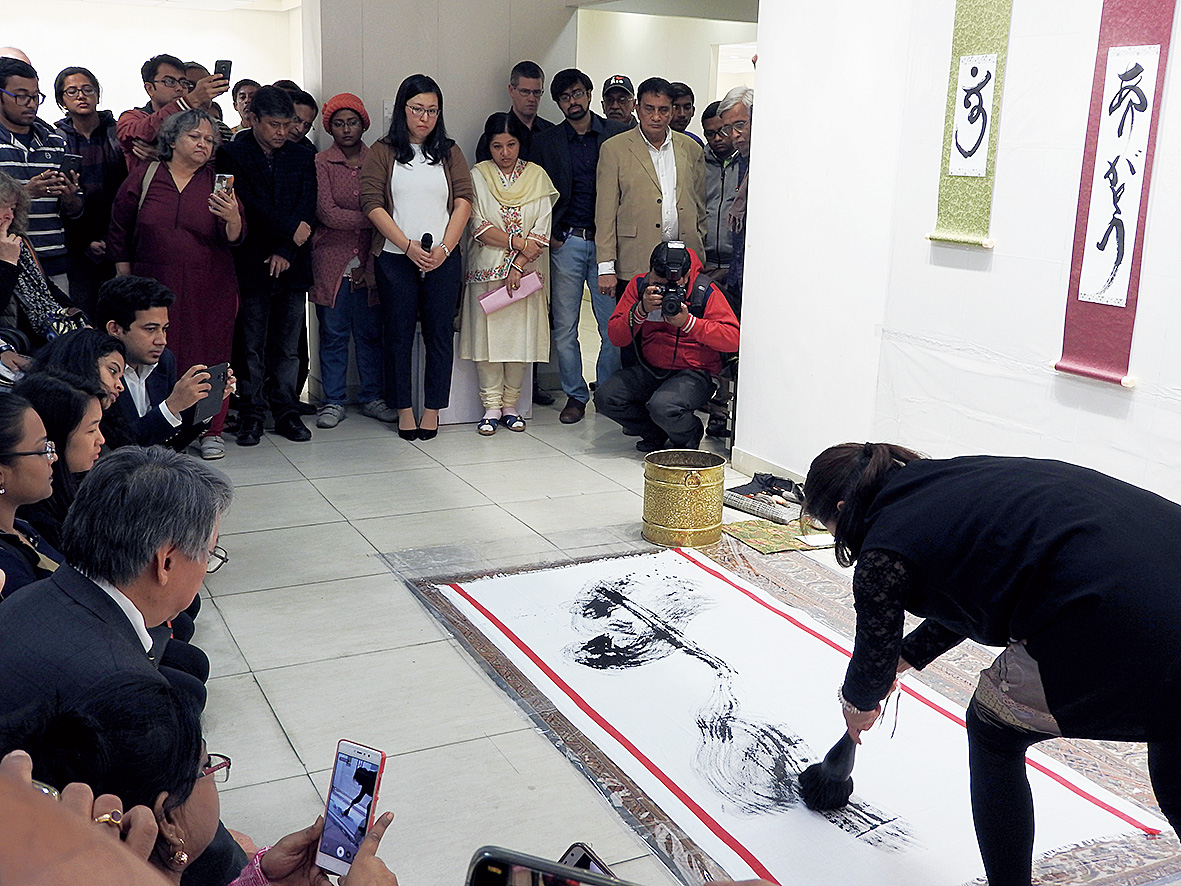Japanese calligrapher Ougai Kofude has years of experience in creating art out of words but at Rabindra Okakura Bhavan recently, she painted the symbol Om and said it was the toughest yet. “It is my tribute to Tagore,” she said.
Kofude was in town to showcase the style of Japan calligraphy called shodo. The consulate general of Japan in Calcutta, in collaboration with Paschimbanga Bangla Akademi, had organised the session.
The audience watched her at work, taking pictures and recording every elaborate and stylised stroke of the brush. “We are fascinated by impressionist art so are enjoying this session,” said visitors Rushi Todi and Mimi Dao. “This is our first time witnessing calligraphy up close and we are intrigued by the power of her strokes.”
A visitor from France Gael Dupayrat was present too. “While we have art exhibitions in France, calligraphy is rare and different. I’m enjoying this art,” Dupayrat said.
Kofude has been practising calligraphy for years, having learnt from her masters and late fiance, who motivated her to pursue her talent. “I began calligraphy as a child, just as other children in Japan learn writing, abacus or calligraphy. It didn’t dawn on me then that I was creating art,” she said.
Among other pieces, Kofude wrote “shanti” (peace) in Hindi and Japanese on the same paper, a word that lit up every Indian face in the room. “This is the first time I am writing in Hindi as also writing in two languages on the same paper,” said the artiste who runs a calligraphy institute back home. “Calligraphy knows no language. One doesn’t need to know Japanese or Hindi to enjoy it. All I want is to give people a warm feeling as they witness my art.”
Watching her perform with the brush among others was a beaming Andre Cognard, the current head of Kobayashi Aikido, a school of martial art. “Kofude’s master was my close friend. After his demise, I took her under my wing. I brought her here as I want people across the world to know about her talent,” he smiled.
Shrija Bose
Tribute to father
CB Block hosted an evening of Hemanga Biswas’s folk music, presented by his daughter Rongili Biswas.
Rongili, whose primary music training was from her father, presented dhamai, bhaoyaiya, bhatiyali, mahishali, jhumur etc. She sang numbers like Aaji ghur ghur ghurani, Uriya pare mor chale and Sonar chand, chand re composed on Sachi mata’s agony at her son Nimai renouncing the world.
Rongili also shared anecdotes from her father’s life. “My father not only sang but also lived by folk philosophy,” she said.
As part of the Hemanga Biswas birth centenary celebration in 2012, Rongili had initiated an effort to compile his works including letters, memoirs, books and write-ups. “I call it a living archive, which is an opportunity to revisit history by delving into his creations.”
“My father believed folk music should be pure to the region it hails from, much like the gharanas of classical music,” said Rongili. “It should be performed using specific instruments, with the right rhythm and dialect.” For instance, a Mahishali song of north Bengal would use the dhol and dotara as the accompaniment, with the latter made of munga thread, to reflect the essence of the region, she pointed out.










